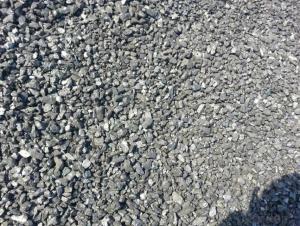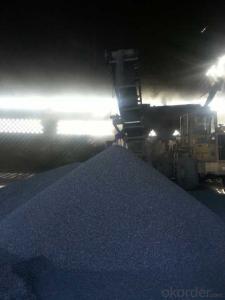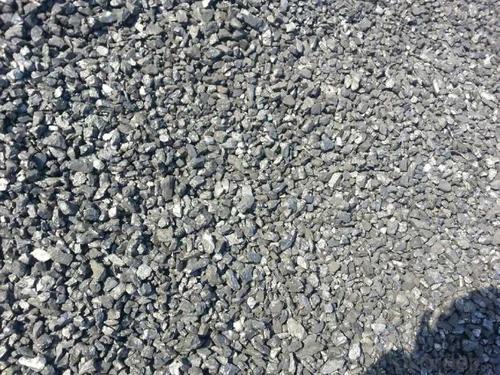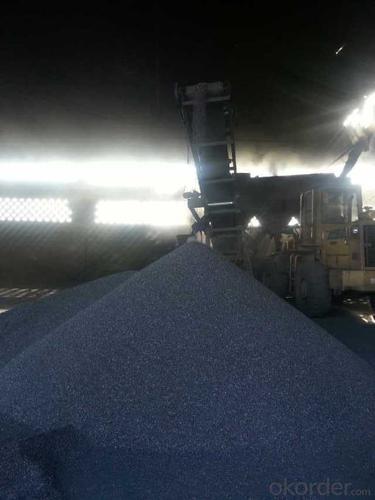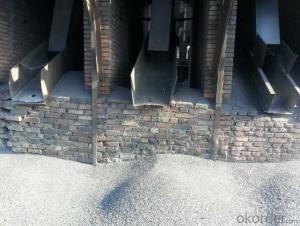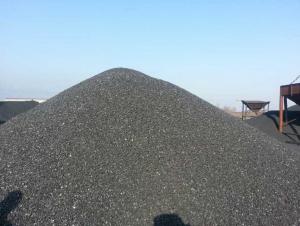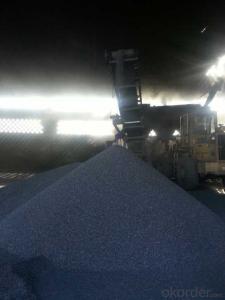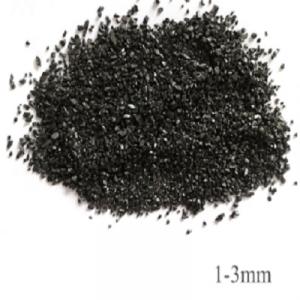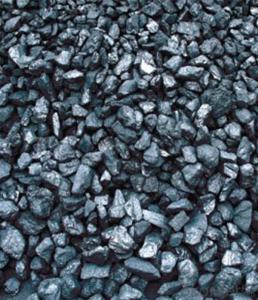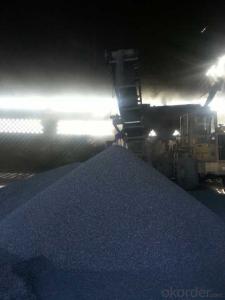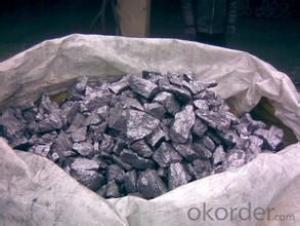Carbon Additive CA With Fixed Carbon 90-95 And With Good Quality
- Loading Port:
- Tianjin
- Payment Terms:
- TT or LC
- Min Order Qty:
- 0 m.t.
- Supply Capability:
- 20000 m.t./month
OKorder Service Pledge
OKorder Financial Service
You Might Also Like
Introduction:
Calcined Anthracite is produced when Anthracite is calcined under the temperature of 1240°C in vertical shaft furnaces. Calcined Anthracite is produced using the best Anthracite-Taixi Anthracite , with the specification of low S and P, It is widely used in steel making and casting as carbon additive. It can reduce the proporation of Iron in steelmaking and reduce the cost.
Usage:
1: Used as Carbon additive, Charge coke, Injection carbon in steelmaking to reduce the steelmaking cost.
2: Used as carbon additive in foundry area.
3: Used to product other carbon materials, such as carbon electrode, carbon electrode etc.
Package:
In mt jumbo bags or packed as buyer's request
General Specification of Calcined Anthracite
PARAMETER UNIT GUARANTEE VALUE | |||||
F.C.% | 95MIN | 94MIN | 93MIN | 92MIN | 90MIN |
ASH % | 4MAX | 5MAX | 6MAX | 7MAX | 8MAX |
V.M.% | 1 MAX | 1MAX | 1.5MAX | 1.5MAX | 1.5MAX |
SULFUR % | 0.5MAX | 0.5MAX | 0.5MAX | 0.5MAX | 0.5MAX |
MOISTURE % | 0.5MAX | 0.5MAX | 0.5MAX | 0.5MAX | 0.5MAX |
Packaging & Delivery
| Packaging Detail: | 25kgs/50kgs/1ton per bag or as buyer's request |
| Delivery Detail: | Within 20 days after receiving corect L/C |

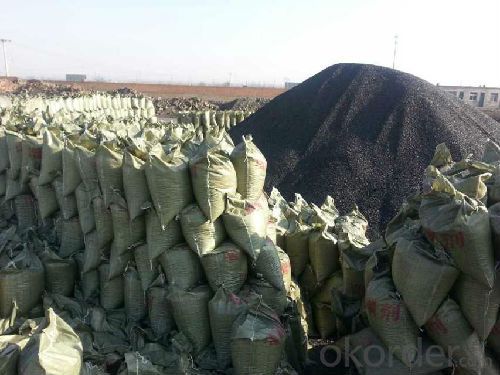
- Q: How does carbon impact the availability of clean water resources?
- The availability of clean water resources can be significantly influenced by carbon. One way carbon affects water resources is by contributing to climate change. The burning of fossil fuels, mainly responsible for increased carbon emissions, leads to higher global temperatures and disrupts the water cycle. This disruption results in more frequent and severe droughts in certain regions, while others face increased rainfall and flooding. The melting of glaciers and snowpacks, which are essential sources of freshwater for many communities, is also affected by climate change. As carbon emissions warm the planet, glaciers and snowpacks melt at an accelerated rate, reducing the water supply in rivers and streams that rely on these natural storages. This ultimately leads to water scarcity, affecting drinking water availability, agricultural irrigation, and industrial water usage. Moreover, the quality of water resources can be impacted by carbon pollution. Carbon dioxide dissolves in water and reacts with it, causing a decrease in pH levels and increased acidity. This process, known as ocean acidification, is particularly harmful to marine ecosystems and organisms that rely on carbonate ions to build their shells or skeletons. As these organisms struggle to survive, it disrupts the balance of entire aquatic ecosystems, which then affects the availability of clean water resources. Additionally, carbon-based pollutants from human activities, such as industrial processes or agricultural runoff, can contaminate water sources. Pesticides, fertilizers, and hydrocarbons, which are carbon-based chemicals, can infiltrate groundwater or be washed into rivers and lakes, compromising their quality and rendering them unsuitable for drinking or other uses. In conclusion, the impact of carbon on the availability of clean water resources is complex. It affects the quantity of water through changes in the water cycle, reduces water quality through acidification and pollution, and disrupts ecosystems that rely on water resources. Addressing carbon emissions and mitigating climate change is crucial to protect and ensure the availability of clean water for current and future generations.
- Q: How many points can Yongan change for 1 carbon coins?
- Every Thursday at 19:00, carbon points change for carbon coins, 19:30 carbon coins exchange gifts
- Q: What is carbon neutral shipping?
- The concept of carbon neutral shipping involves offsetting or balancing the carbon emissions produced during the transportation of goods by sea, air, or land. Its goal is to minimize the environmental and climate impact of shipping. Shipping contributes to greenhouse gas emissions by burning fossil fuels, primarily heavy fuel oil in ships' engines. This releases carbon dioxide (CO2), nitrogen oxides (NOx), sulfur oxides (SOx), and particulate matter into the atmosphere, contributing to global warming and air pollution. To achieve carbon neutrality in shipping, different strategies can be used. One common approach is carbon offsetting, which involves investing in projects that remove or reduce an equivalent amount of CO2 from the atmosphere. This can include reforestation, renewable energy projects, or methane capture initiatives. By supporting these projects, shipping emissions are balanced out, resulting in a net-zero carbon footprint. Another way to achieve carbon neutrality is by using alternative fuels and energy-efficient technologies. Biofuels, hydrogen, and electric propulsion systems can significantly reduce or eliminate carbon emissions from ships. Optimizing shipping routes and vessel design can also reduce fuel consumption and emissions. Collaboration between shipping companies, governments, and international organizations is crucial to promote carbon neutral shipping. This includes setting industry-wide emission reduction targets, implementing stricter regulations, and providing incentives for sustainable practices. While carbon neutral shipping is a positive step towards addressing climate change, it should be seen as a transitional measure towards a fully decarbonized shipping sector. Continued research and development in clean technologies, along with the adoption of sustainable practices, are essential for long-term environmental sustainability in the shipping industry.
- Q: Is the power consumption of carbon fiber heating very high?
- 4, environmental protection: power is internationally recognized environmental protection energy, not harmful to human dust, gas, no need to take care of personnel. 5, do not occupy space: heating system ground laying does not occupy interior space, reduce decoration costs, indoor furniture arrangement is convenient. Carbon fiber floor heating advantages and disadvantages - carbon fiber heating, shortcomings 1, need to be replaced frequently thermostat: as a result of the use of sub chamber thermostat frequently, every three to five years need to replace the thermostat, the price is 100-500 yuan. 2, radiation: carbon fiber heating operation will produce certain radiation, long-term use may have an impact on health, especially pregnant women and children. 3, the use of high cost: electricity heating energy source entirely rely on electricity, consumption of large, especially for large residential users, the use of electricity heating, higher costs, generally applicable to small Huxing residential. The above is the advantages and disadvantages of carbon fiber heating, introduced, in general, carbon fiber heating ground heating faster, uniform cooling comfort, for small Huxing, early laying costs are not high, so there is a certain market. If you intend to use it, the sun Yiqun is good, you can learn about
- Q: What is carbon steel, carbon manganese steel?
- Carbon manganese steel is a high-quality carbon structural steel in the higher manganese content of carbon steel, manganese elements are generally marked in the rear, such as 20Mn, 40Mn and so on
- Q: Material characteristics of carbon fiber
- Carbon fiber is a kind of new material with excellent mechanical properties due to its two characteristics: carbon material, high tensile strength and soft fiber workability. The tensile strength of carbon fiber is about 2 to 7GPa, and the tensile modulus is about 200 to 700GPa. The density is about 1.5 to 2 grams per cubic centimeter, which is mainly determined by the temperature of the carbonization process except for the structure of the precursor. Generally treated by high temperature 3000 degrees graphitization, the density can reach 2 grams per cubic mile. Coupled with its weight is very light, it is lighter than aluminum, less than 1/4 of steel, than the strength of iron is 20 times. The coefficient of thermal expansion of carbon fiber is different from that of other fibers, and it has anisotropic characteristics. The specific heat capacity of carbon fiber is generally 7.12. The thermal conductivity decreases with increasing temperature and is negative (0.72 to 0.90) parallel to the fiber direction, while the direction perpendicular to the fiber is positive (32 to 22). The specific resistance of carbon fibers is related to the type of fiber. At 25 degrees centigrade, the high modulus is 775, and the high strength carbon fiber is 1500 per centimeter.
- Q: What are the effects of carbon emissions on the stability of peatlands?
- Carbon emissions have significant effects on the stability of peatlands, leading to various environmental and ecological consequences. Peatlands are wetland ecosystems composed of partially decomposed organic matter, primarily consisting of dead plants and mosses. These ecosystems are known as important carbon sinks, storing large amounts of carbon in the form of plant material and organic peat. When carbon emissions, particularly from the burning of fossil fuels, are released into the atmosphere, it contributes to the overall increase in greenhouse gases, such as carbon dioxide (CO2) and methane (CH4). This increase in greenhouse gases leads to global warming and climate change, which have direct impacts on peatlands. One of the primary effects of carbon emissions on peatlands is the acceleration of peat decomposition. As temperatures rise due to global warming, the rate of microbial activity in peatlands increases, resulting in faster decomposition of organic matter. This process releases carbon dioxide and methane, further contributing to greenhouse gas emissions. The increased decomposition can also lead to the subsidence or sinking of peatlands, which affects their stability and can contribute to land degradation. Additionally, carbon emissions can alter the hydrology of peatlands. Rising temperatures can cause increased evaporation and reduced precipitation, leading to drier conditions in peatlands. This can result in water tables dropping below the surface, which inhibits the growth of mosses and the accumulation of new peat. As a result, peatlands become less capable of sequestering carbon and can even transition into carbon sources rather than sinks. The destabilization of peatlands due to carbon emissions has cascading effects on the overall ecosystem. Peatlands provide habitats for numerous plant and animal species, many of which are unique and highly adapted to these specific environments. The drying and sinking of peatlands can disrupt these ecosystems, leading to changes in the composition and distribution of species, as well as increased susceptibility to invasive species. Furthermore, the release of carbon dioxide and methane from peatlands contributes to the amplification of climate change. These greenhouse gases trap heat in the atmosphere, leading to further warming and exacerbating the cycle of peat decomposition and carbon emissions. In conclusion, carbon emissions have detrimental effects on the stability of peatlands, including accelerated peat decomposition, altered hydrology, and disruption of ecosystems. These impacts not only hinder peatlands' ability to sequester carbon but also contribute to climate change, creating a negative feedback loop. It is crucial to reduce carbon emissions and prioritize the preservation and restoration of peatlands to mitigate these effects and protect these valuable ecosystems.
- Q: What are the impacts of carbon emissions on the stability of grasslands?
- Carbon emissions have significant impacts on the stability of grasslands. As carbon dioxide (CO2) is released into the atmosphere, it contributes to the greenhouse effect, leading to global warming. This increase in temperature has several detrimental effects on grasslands. Firstly, higher temperatures can disrupt the balance of grassland ecosystems. Many grassland species have specific temperature requirements for growth and reproduction. As temperatures rise, these species may struggle to adapt, leading to a decline in their populations. This can disrupt the overall biodiversity and ecological stability of grasslands. Secondly, global warming can alter precipitation patterns, leading to changes in water availability in grasslands. Reduced rainfall or increased evaporation can result in drought conditions, making it difficult for grasses to grow and thrive. This can lead to the desertification of grasslands, transforming them into barren areas devoid of plant life. Furthermore, carbon emissions contribute to the acidification of the oceans, which can indirectly impact grasslands. Acidic ocean waters affect marine organisms, including those responsible for generating nutrients that are carried by winds to coastal and inland grasslands. If these nutrient sources decline, grasslands may experience reduced fertility and productivity, affecting the stability of these ecosystems. Lastly, carbon emissions can also exacerbate the frequency and intensity of wildfires. Grasslands are naturally adapted to periodic fires, which play a crucial role in maintaining biodiversity and regulating plant populations. However, the increase in carbon dioxide levels can fuel more intense and frequent wildfires, which can destroy grasslands and make their recovery more challenging. In conclusion, carbon emissions have multiple negative impacts on the stability of grasslands. They disrupt the balance of grassland ecosystems, alter precipitation patterns, contribute to ocean acidification affecting nutrient sources, and increase the risk of wildfires. These effects can lead to biodiversity loss, desertification, reduced fertility, and overall instability in grassland ecosystems. It is crucial to reduce carbon emissions and mitigate the impacts of global warming to ensure the long-term stability and preservation of grasslands.
- Q: Helmet material: ABS composites, FRP, carbon fiber, what are the differences? How to tell good from bad?
- ABS resin is one of the five major synthetic resin, impact resistance, heat resistance, low temperature resistance, chemical resistance and excellent electrical properties, but also has the characteristics of easy processing, product size stability, good surface gloss, easy coloring, painting, but also the surface plating metal, electroplating, welding, hot pressing and bonding the two processing, widely used in the industrial field of mechanical and automotive electrical and electronic instruments, textiles and construction, is a very widely used thermoplastic engineering plastics.Materials (Composite) is a material consisting of two or more than two different materials which, in physical or chemical ways, macroscopically form new properties. Various materials in the performance complement each other, and produce synergistic effect, so that the comprehensive performance of composite material is better than the original material, and meet a variety of different requirements. The matrix materials of composite materials are divided into two major categories: metal and nonmetal. Metal matrix commonly used aluminum, magnesium, copper, titanium and its alloys. The non-metallic matrix mainly includes synthetic resin, rubber, ceramic, graphite, carbon and so on.
- Q: What is the significance of the determination of total organic carbon in purified water?
- The first tube with 5 drops of nitric acid and silver nitrate solution 1ml second tube plus barium chloride solution 2ml third tube plus ammonium oxalate solution 2ml, are not allowed to turbidity. Take this product 5ml nitrate test tube, in ice bath cooling, adding 10% potassium chloride solution and 0.1% 0.4ml aniline two 0.1ml sulfuric acid solution, then slowly adding sulfuric acid 5ml, shake the tube in 50 DEG C water bath for 15 minutes, the solution with the standard blue nitrate solution [for potassium nitrate 0.163g, dissolved in water and diluted to 100ml, shake, precise amount of water into 1ml, 100ml, then the precise amount of water into 10ml, 100ml, and the (per 1ml equivalent to 1 gNO3]0.3ml), with no nitrate water 4.7ml, compared with the same method after color not more, (0.000006%). Nitrite to take this product 10ml, the Nessler tube, and sulfanilamide dilute hydrochloric acid solution (1, 100) and 1ml hydrochloride Naphthylethylenediamine (0.1 - 100) 1ml solution, the pink, and the standard solution of sodium nitrite and nitrite [0.750g (calculated on dry goods), dissolved in water, dilute to 100ml, shake, precise amount of water into 1ml, 100ml, and then precise amount of water into 1ml, 50ml, and the (equivalent to 1 gNO2 per 1ml) 0.2ml), plus nitrite free water 9.8ml, compared with the same method after color, shall not be deeper (.000002%). Take this product 50ml ammonia, alkaline potassium tetraiodomercurate solution 2ml, placed 15 minutes; such as color, with ammonium chloride solution (from ammonium chloride 31.5mg, and no amount of ammonia dissolved and diluted into 1000ml 1.5ml), compared with alkaline solution and free ammonia 48ml iodine potassium iodide solution made from 2ml, not deeper (0.00003%).
Send your message to us
Carbon Additive CA With Fixed Carbon 90-95 And With Good Quality
- Loading Port:
- Tianjin
- Payment Terms:
- TT or LC
- Min Order Qty:
- 0 m.t.
- Supply Capability:
- 20000 m.t./month
OKorder Service Pledge
OKorder Financial Service
Similar products
Hot products
Hot Searches
